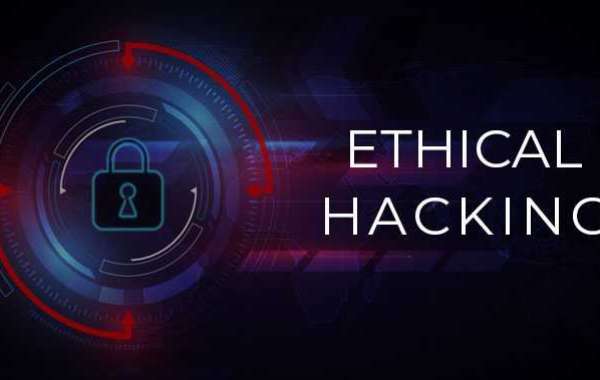Before we define the term, let's first understand what is ethical hacking is. In simple terms, it is the process of finding weaknesses in a system and then using those weaknesses to gain unauthorized access. It is no surprise that hacking is illegal, and many individuals have found themselves behind bars because of it. Therefore, this hacking is called unethical hacking.
Did you know that hacking can be legal if you can get permission for it? Companies hire experts to hack into their systems to find their weaknesses. It helps the businesses rectify them and prevent malicious hackers from gaining confidential information as well.
In summary, the individuals who hack into systems legally with permission, without any malicious end-goal, are known as ethical hackers. And the process is called ethical hacking.
Some of the different ethical hacking practices are:
- Web server hacking
- Hacking wireless networks
- System hacking
- Social engineering
- Web application hacking
Do you want to get training for ethical hacking along with certification? Become an expert with the Ethical Hacking certification course in Chennai
Evolution of Ethical Hacking
There are four high points in the history and evolution of ethical hacking.
- Ethical hacking brought the practice of defense into the digital world. Attacking your defense to locate your weaknesses and using that to an advantage is one of the critical ethical hacking concepts. Technically, the idea behind it had been around for more than a thousand years.
- In 1995, Netscape launched the first Bug Bounty Program. It gave rewards to hackers for reporting vulnerabilities before somebody could exploit them.
- In 2014, Google paid white hat hackers about $1.5 million.
- In 1995, IBM's John Patrick first used the term "ethical hacking."
Core Principles of Ethical Hacking
Ethical hackers follow four core principles:
- Staying legal: Hackers need legal permission to access and perform security assessments.
- Determining the assessment scope: To stay within approved legal boundaries, the ethical hacker should define the assessment’s scope.
- Reporting vulnerabilities: The hacker should report any vulnerabilities he finds to the organization.
- Taking data-sensitive information into consideration: Usually, ethical hackers sign a non-disclosure agreement for the organization before starting the assessment.
Types of Hackers
Typically, there are three types of hackers.
White Hat Hacker
An ethical hacker is also known as a white-hat hacker. They gain access to a system with proper approval to find out vulnerabilities. They intend to fix them before a malicious hacker exploits them.
Black Hat Hacker
Black hat hackers are also called crackers. They hack into a system without any permission and harm its network or steal confidential and sensitive information. This hacking is illegal and includes work like stealing corporate data, damaging systems, violating data privacy, etc.
Grey Hat Hacker
The last type of hacker is the grey hat hacker, a combination of both black hat and white hat hacker. They usually hack for fun, and they exploit a system without the owner's knowledge.
Skills Required to Become a Certified Ethical Hacker
The top skills to become an ethical hacker include:
- Excellent computer skills
- Programming skills
- Database management systems (DBMS)
- Cryptography
- Linux
- Reverse engineering
- Wireless technologies
- Web applications
- Networking
- Critical thinking and problem-solving.
Phases of Ethical Hack
Ethical hacking is divided into six phases, which include:
Planning and Reconnaissance
Reconnaissance refers to gathering information relevant to the target system, including operating systems, IP configuration, detecting services, etc. In this phase, some of the tools used are Nmap, Hping, Google Dorks, etc.
Scanning
In the scanning phase, the hacker examines the target machine or the network for any weaknesses. Tools used in this process include Nessus, Nexpose, and NMAP.
Gaining access
In this phase, the identified weakness is exploited using several methods. The hacker tries to enter the target system without raising any alarms. The main tool used in the process is Metasploit.
Maintaining access
This phase is essential, as the hacker installs backdoors and payloads onto the target system. Payloads are activities performed on a system after gaining unauthorized access. Backdoors help the hacker gain access quickly.
Reporting
It is the last stage in the ethical hacking process. In this phase, the ethical hacker makes a report with the results. It includes the tools used, the success rate, vulnerabilities found, and the exploit processes.
Limitations of Ethical Hacking
Although ethical hacking can be beneficial for organizations and individuals, limitations exist for it. Three main ones are:
Ethical hacking can have a limited scope: Although it's not impossible to discuss out-of-scope attack potential with an organization, limitations exist to make an attack successful.
Limited resources: Computer power and budget are two limited primary resources in ethical hacking. Unlike malicious hackers, white hat hackers have time constraints.
Restricted methods: Organizations ask ethical hackers to avoid test cases that make servers crash:— for example, Denial of Service (DoS) attacks.
Wrapping Up
As the number of internet users increases, businesses are relying on the Internet more and more. With the numbers rising, there is a greater risk of security breaches and leakage of data. Malicious hackers are finding ways to cause damage to businesses, so organizations need new plans and security measures to prevent dangerous attacks.
Therefore, the demand for skilled, ethical hackers is also increasing day by day. It is vital and has a positive future ahead.




